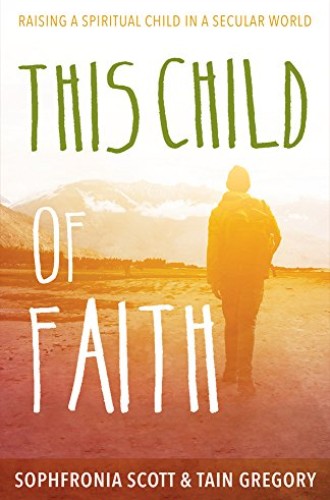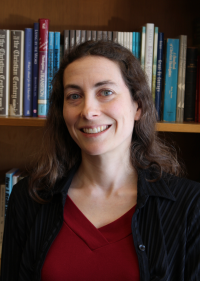A child’s faith before and after Sandy Hook
Tain Gregory was new to Sandy Hook Elementary School when the mass shooting happened, but the faith that helped him respond had been a long time in the making.
After every new act of mass gun violence these days, I hear liberal voices using Sandy Hook as shorthand for the moment America revealed itself as a nation that cares more about access to guns than preventing mass shootings. If we can’t convince our legislators to tighten gun restrictions after Sandy Hook, the argument goes, there’s no hope that they will ever be convinced to do so. In theory, I don’t disagree with this pessimistic assessment. But my own version of “after Sandy Hook” is more personal. It was the moment when I began to accept the frightening and deeply sad—but entirely necessary—step of letting my children go out into a world where they aren’t guaranteed to be safe.
The remarkable thing about Sophfronia Scott and her son Tain Gregory’s account of Sandy Hook (which they lived through firsthand) is that the “after” isn’t all that different from the “before.” It’s not that they weren’t traumatized, because they were. Tain was a third-grader who had just transferred from a private school to Sandy Hook when, as his mom puts it, “a 19-year-old boy, armed with warlike weaponry, blasted his way into Sandy Hook Elementary. Tain’s [friend] was among the first-graders killed, along with the adults who tried to protect them that day.” Sophfronia describes the heart-wrenching moments after she heard about the shooting and before she could confirm her son’s safety:
Suddenly there it was—that gaping, soundless void opened up, the same as when I thought I had miscarried when I was pregnant with Tain. . . . It is an abyss separating the now from what comes next. But this time I didn’t step into it prematurely and start grieving. And I didn’t stand there voiceless and alone because I had remembered Pastor Kathie’s words: That’s when you have other people pray for you. I called Pastor Kathie.
The faith that carried Sophfronia and her family through the trauma was a long time in the making, and the bulk of the book is about the slow but dedicated process of spiritual formation their family embraces after Tain, who was raised without church, declares at age six that he wants to go to Sunday School. They immerse themselves in their local Episcopal congregation. Tain brings home a Jesus doll and begins singing in the children’s choir. Sophfronia reads the Book of Common Prayer and eventually agrees to teach Sunday School. Mother and son pray Compline together before bed. They’re baptized together on a crisp fall morning.
By the time the mass shooting happens in the narrative, the book is nearly finished and the family has already relied on their faith through two unexpected deaths. So when Sophfronia says “I didn’t stand there voiceless and alone,” readers have a clear sense of the robust faith behind those words. Even in our worst traumas, the before and the after don’t need to be separated by a deep abyss when we’re rooted in Christian community.
Frankly, this is one of the best books about faith formation I’ve read. The writing is honest and humble. Sophfronia doesn’t pretend to have all the answers. When Tain asks her one night at Compline if they can have communion together at home, she consults the Book of Common Prayer. After failing to find any prohibitions, she celebrates communion with him, altering the words to make it clear that she’s not a priest. The Lutheran in me raises an eyebrow here, but the mother in me remembers Jesus’ words: Let the little children come to me, and do not hinder them. And any pastor who has poured energy into Holy Week worship-planning will find Sophfronia’s wry account of attending church every day during Holy Week to be both hilarious and sobering: “When the burning candles spilled over and I got hot wax on my hands, I’d had enough. I blew out the candles, roused Tain, and we went home.”
The portions of the narrative written by Tain are sparse, brief, and endearing. He’s now in middle school, looking back on the faith of his early childhood through the eyes of a slightly-older child. “Not a lot of kids are comfortable with church,” he writes, “but I think it could really help someone at a young age, especially after 12/14.” That sentence is both heartbreaking and hopeful. It reminds us that for the generation of children born after 9/11, there will always be new acts of mass violence that divide time into a before and an after. But there will also be communities of faith to remind us that Christ bridges the abyss.






